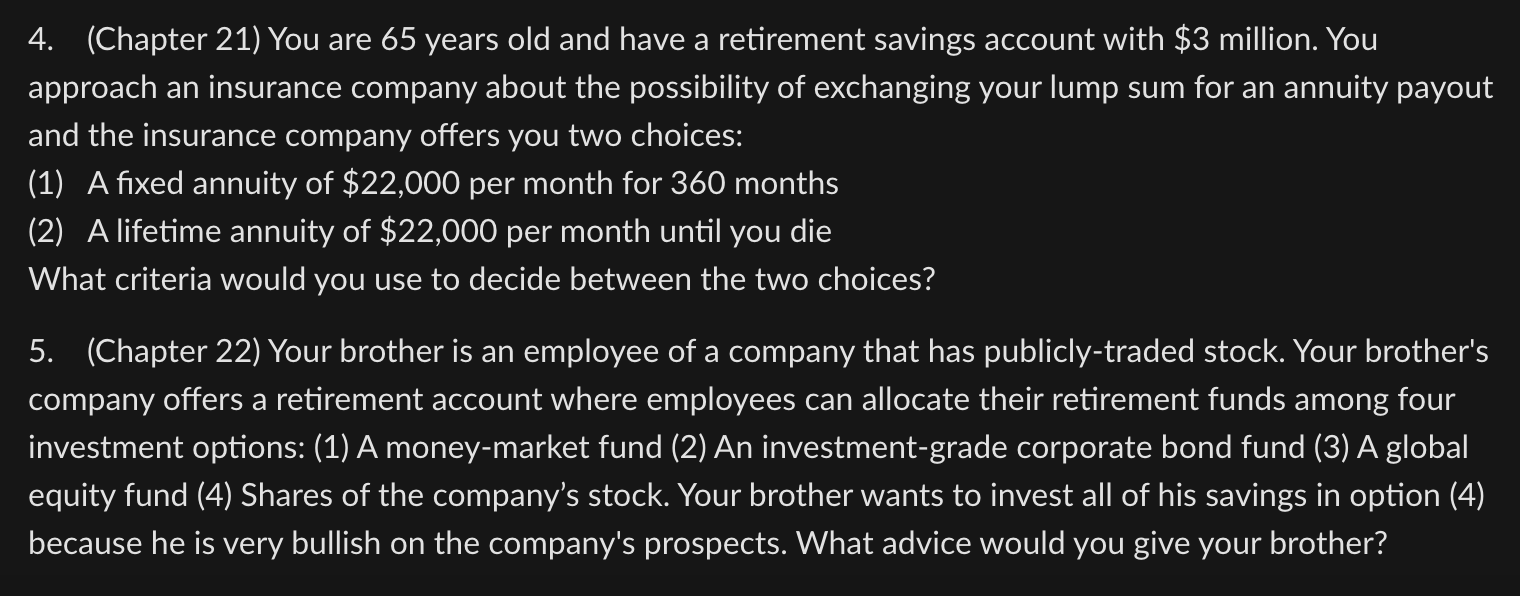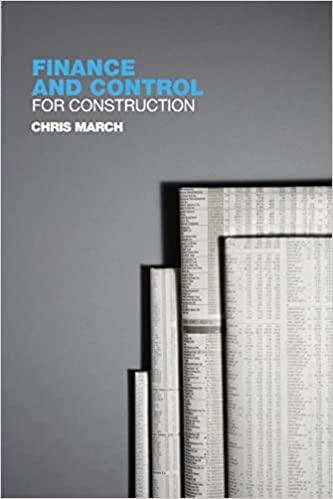
 Please answer with at least 4-5 sentences each.
Please answer with at least 4-5 sentences each.
Questions: 1. (Chapter 2) You are managing an active mutual fund that tries to beat the S&P 1500 index. There is an actively-traded exchange traded fund (ETF) on the benchmark index (Symbol: SPR), you are considering adding a bearish SPR derivatives position to your portfolio. You can either buy an SPR put option, sell an SPR call option, or sell an SPR futures contract. Based on your forecast, your fund will earn higher returns than the index most of the time. However, there is a risk that your fund could earn lower returns than the index when the index has a substantial negative return. Which of these bearish option positions (Buy SPR Put, Sell SPR Call, Sell SPR Future) is most appropriate to implement and why? 2. (Chapter 4) You are an individual investor who is bullish on the utilities sector of the US equity market. Rather than purchase shares of stock for several individual firms in the sector, you decide to reduce trading costs by purchasing XLU, a US utilities sector equity ETF. Can you be confident that the price of the XLU will generally stay within 1% of the net asset value (NAV) of the underlying shares of stock in the ETF's benchmark index? Why or why not? 3. (Chapter 19) Consider three stock market indexes: the Dow Jones Industrial Average (DJIA), the S&P 500, and the Nikkei 225. Suppose you forecast that all three indices will have expected returns of 15% and annual standard deviations of 30%. You forecast that the DJIA and S&P 500 have 0.95 correlation, the DJIA and Nikkei 225 have 0.75 correlation, and the S&P 500 and Nikkei 225 have 0.75 correlation. Could you improve your risk-adjusted returns by diversifying internationally? Why or why not? 4. (Chapter 21) You are 65 years old and have a retirement savings account with $3 million. You approach an insurance company about the possibility of exchanging your lump sum for an annuity payout and the insurance company offers you two choices: (1) A fixed annuity of $22,000 per month for 360 months (2) A lifetime annuity of $22,000 per month until you die What criteria would you use to decide between the two choices? 5. (Chapter 22) Your brother is an employee of a company that has publicly-traded stock. Your brother's company offers a retirement account where employees can allocate their retirement funds among four investment options: (1) A money-market fund (2) An investment-grade corporate bond fund (3) A global equity fund (4) Shares of the company's stock. Your brother wants to invest all of his savings in option (4) because he is very bullish on the company's prospects. What advice would you give your brother? Questions: 1. (Chapter 2) You are managing an active mutual fund that tries to beat the S&P 1500 index. There is an actively-traded exchange traded fund (ETF) on the benchmark index (Symbol: SPR), you are considering adding a bearish SPR derivatives position to your portfolio. You can either buy an SPR put option, sell an SPR call option, or sell an SPR futures contract. Based on your forecast, your fund will earn higher returns than the index most of the time. However, there is a risk that your fund could earn lower returns than the index when the index has a substantial negative return. Which of these bearish option positions (Buy SPR Put, Sell SPR Call, Sell SPR Future) is most appropriate to implement and why? 2. (Chapter 4) You are an individual investor who is bullish on the utilities sector of the US equity market. Rather than purchase shares of stock for several individual firms in the sector, you decide to reduce trading costs by purchasing XLU, a US utilities sector equity ETF. Can you be confident that the price of the XLU will generally stay within 1% of the net asset value (NAV) of the underlying shares of stock in the ETF's benchmark index? Why or why not? 3. (Chapter 19) Consider three stock market indexes: the Dow Jones Industrial Average (DJIA), the S&P 500, and the Nikkei 225. Suppose you forecast that all three indices will have expected returns of 15% and annual standard deviations of 30%. You forecast that the DJIA and S&P 500 have 0.95 correlation, the DJIA and Nikkei 225 have 0.75 correlation, and the S&P 500 and Nikkei 225 have 0.75 correlation. Could you improve your risk-adjusted returns by diversifying internationally? Why or why not? 4. (Chapter 21) You are 65 years old and have a retirement savings account with $3 million. You approach an insurance company about the possibility of exchanging your lump sum for an annuity payout and the insurance company offers you two choices: (1) A fixed annuity of $22,000 per month for 360 months (2) A lifetime annuity of $22,000 per month until you die What criteria would you use to decide between the two choices? 5. (Chapter 22) Your brother is an employee of a company that has publicly-traded stock. Your brother's company offers a retirement account where employees can allocate their retirement funds among four investment options: (1) A money-market fund (2) An investment-grade corporate bond fund (3) A global equity fund (4) Shares of the company's stock. Your brother wants to invest all of his savings in option (4) because he is very bullish on the company's prospects. What advice would you give your brother

 Please answer with at least 4-5 sentences each.
Please answer with at least 4-5 sentences each.





